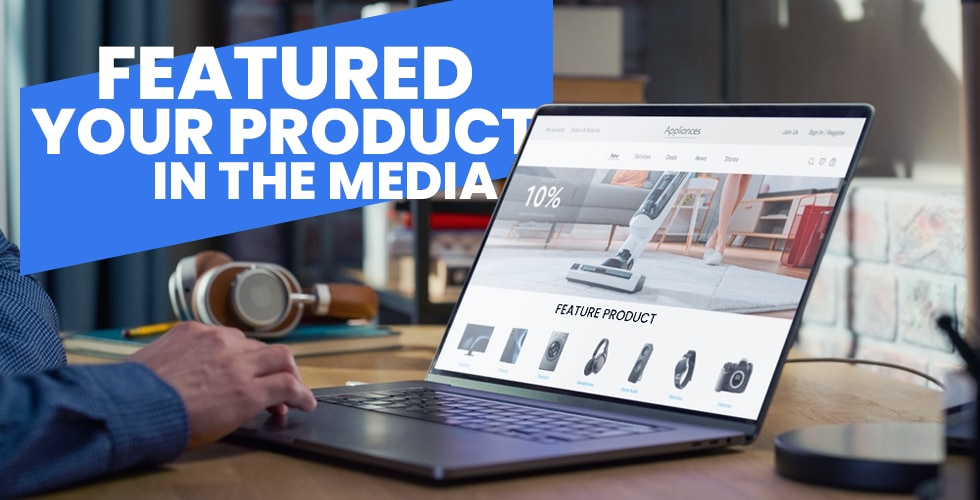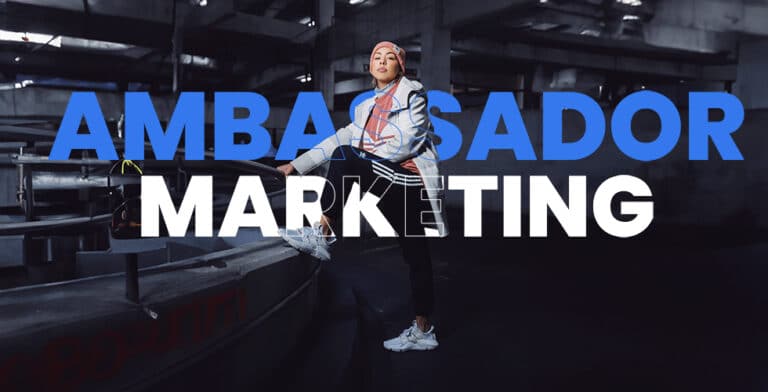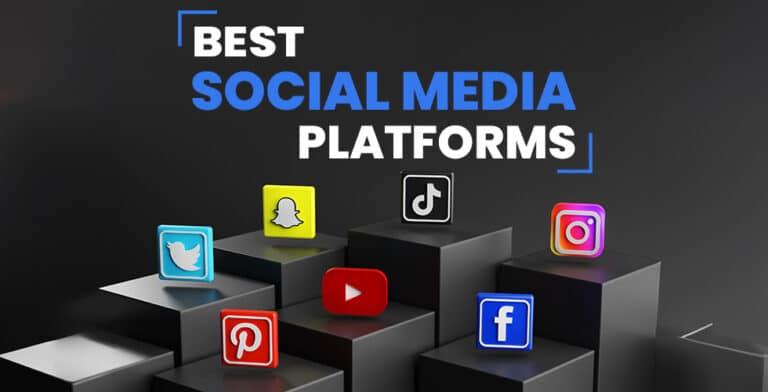Getting your product featured in media outlets is an extremely effective path for startups and businesses looking to drive growth. Whether earned or paid, positive press coverage and media exposure lend credibility, raise awareness, spark conversation, and boost interest in your offerings.
This guide will explore best practices for securing media features across channels like print, online, TV and more. We’ll dig into pitching tactics, developing strong media relationships and the types of coverage best suited for your goals.
With strategic planning and persistence, you can get your product in front of millions of new potential customers.
Let’s start mapping out an approach tailored to your brand and offerings now to start maximizing media impressions and ROI.
What is Media Coverage
Media coverage refers to any instance where a media outlet or publication features your brand, product, or service. This includes but is not limited to:
- Print media features like newspaper articles or magazine profiles
- Online media coverage through news sites, popular blogs, or roundups
- Broadcast media via TV news segments, radio interviews or podcast appearances
- Social media features when journalists or influencers share your brand with their audiences
The key element is that a media entity outside of your direct ownership decides to provide exposure for your product because it aligns with their audience’s interest. This third-party validation comes in two primary forms – earned media, which is organic or unpaid, and paid media, which involves sponsorships or advertising placements.
Whichever route, the fundamental goal remains boosting awareness and sharing your messaging through trusted platforms able to garner significant impressions. Let’s explore exactly why media publicity is so impactful next.
Benefit Of Getting Your Product Featured In Media
Securing media coverage for your newly launched product or service can provide tremendous value for any brand investing time into thoughtful media outreach.
Boosts Credibility
Getting your product organically covered or even highlighted by an industry authority or popular consumer media outlet massively elevates trust and credibility. Audiences realize if you meet the standards and interest of an outlet they follow, your offering deserves a closer look.
Earned media also ranks extremely high on integrity. Hearing an unbiased, third party perspective on what makes your solar battery packs, luxury wrinkle cream or meal prep service so innovative feels authentic and sparks action.
Increased Brand Awareness
The average small business only reaches 2-5% of its potential local target market solely relying on owned channels like email lists, social media and website visitors. Earned media allows you to tap into follower bases numbering in the tens or hundreds of thousands for top outlets.

A single write-up on a popular morning show or regional newspaper can introduce you to more people at once than months of independent promotion. While impressions matter, so does context. Getting people thinking about solar energy storage solutions because they just heard experts discussing your portable power station on the news drives more qualified awareness.
Generate Leads & Sales
Every media win should provide a clear next step or channel to continue engaging – whether signing up for a newsletter, following social media or redeeming a special discount code. Metrics like website traffic, demo sign-ups completed or sales attributed to a campaign code indicate media moved audiences along the conversion path closer to a transaction.
Without clear calls-to-action and campaign tracking, it’s impossible to optimize media targeting and messaging. Make sure every opportunity to get featured includes lead gen components to realize the full revenue potential.
Types Of Product Featuring In Media
Brands have a few core options when exploring how to get products featured in media. Based on budget, target audience, campaign goals, and other factors – certain platforms tend to produce better ROI.
Let’s explore the unique upsides of each approach.
Paid Collaboration
Paying an influencer or site to feature your latest sneaker launch, mom-focused weekly meal plan service, or mobile game in dedicated posts offers guaranteed placements paired with their existing audience.
Popular creators often have a highly refined process for working with brands in sponsored content across platforms like Instagram, TikTok, blogs, and YouTube.
The authenticity consumers grant online personalities combined with clear calls-to-action make this a proven lead generation strategy. Just ensure sponsorship disclosure guidelines are strictly followed.
Organic Media
Earned media stems from compelling pitches convincing journalists your recent launch deserves coverage based on novelty, aesthetics, function, or newsworthiness alone – no money changes hands.
Placements in widely-read outlets like the New York Times, BuzzFeed, and niche publications build immense brand credibility.
Be prepared to put in the work cold emailing hundreds of reporters to land a few big wins. Quality storytelling attracting press attention brings sustained awareness and elevated stature that money cannot always buy directly.
Owned Media
Content created on your branded site, social channels, email newsletter, and other owned platforms offers total creative freedom and converts visitors primed to purchase.
An in-depth blog reviewing key features or an Instagram Reel showcasing real customers enjoying your product targets those already interacting with your brand through owned channels.
This pathway guarantees full editorial control but only engages existing followers open to your messaging. Expanding reach requires sharing owned content featuring your product out to new groups through strategic partnerships.
Steps To Feature Your Product In The Media
Securing press starts by taking an organized, strategic approach. Follow these best practices when executing an effective product launch campaign aimed at media exposure both within owned channels and through earned outlets.
Select The Coverage Type
Every brand has limited resources – decide upfront what media coverage matters most right now. Maybe wide awareness-focused placed to spread the word outranks deep analytical reviews.
B2B startups need impressions reaching industry decision-makers while B2C ecommerce sites depend on driving transactions.
If owned media lacks the reach to achieve goals solo, explore either paid collaborations or organic pitches. Define key demographics, ideal placements, metrics for success, and budget from the outset when plotting PR and partnerships.

Find Media To Pitch
Do diligent research on reporters, shows, influencers, and publications your buyer personas actually engage with daily. Look beyond big-name outlets to niche sites catering to specific product types, buyer interests, and passions.
Follow relevant media to understand the stories covered, cadence, and angle taken before ever reaching out. Identify past features aligning closely to your product’s attributes and value proposition.
Pitch writers already bought into that beat for the highest open rates.
Prepare Press Release
A press release acts as an official announcement presenting product details, company background, creator quotes, images and reasons this launch deserves attention in a succinct, journalistic format reporters can easily build from.
Distribute across paid newswires for the greatest visibility. This also provides a linkable asset for media to directly reference rather than rehash points.
Send Away Your Press Release
Email targeted press lists with a personal pitch on why this aligns with their audience and past coverage – including the full release as a reference.
Follow up within a week by sharing your pitch. Provide digital assets, product access, or additional details on request while the news cycle timing makes sense.
Maximize early momentum by lining up your owned blog launch feature, affiliate promotions, and founder podcast appearance to coincide with this media push.
Follow Up
Just because an initial pitch went unanswered doesn’t mean outlets won’t circle back months later. Continue sharing company growth updates, newly published reviews, and strong sales or social proof points over time.
Ongoing relevant, valuable updates demonstrate your product has staying power. This builds relationships with the press now likelier to provide coverage during future launches.
Tips For Getting Your Products Featured In Media
Beyond strong press materials and pitches, several proven strategies exist to improve product land(ing) media features across both paid and earned channels. Leverage these tips for greater exposure:
Get Connected With Journalists
Research individual reporters covering your product niche to find social media profiles or personal websites. Follow them, share relevant articles while citing their coverage, and provide thoughtful comments on pieces relating to your industry.
This visibility combined with valued insights plants the seeds for a warm relationship well before ever asking directly for media coverage.
Sign up for Help a Reporter Out (HARO) or respond to press requests on Twitter seeking experts to quote or sources able to discuss trends tied to your offerings.
Focus On Audience Interest
Press wins come from great stories – not products alone. Study the angle outlets take when covering competitors or those addressing similar needs to understand what elements editors believe resonate most with readers.
Craft unique narratives around inventor motivations, development challenges and customer reactions for a compelling, memorable showcase beyond touting features. Make their job easy by delivering the emotional hook wrapped in hard facts.
Use Social Media
Launching an eye-catching TikTok campaign displaying your product in use, running an Instagram giveaway, or leveraging influencer seeding builds valuable social proof. Compile the best organic videos, shares, and real comments into a media kit for reporters.
These snippets of authentic user reactions make stories vivid while proving public interest in your brand. Encourage UGC creation by making it ultra-simple for early adopters to generate creation-friendly product shots.
Reach Out to Popular Bloggers
Bloggers drive purchase decisions across nearly every niche – beauty, parenting, tech, and more.
Earn links and recommendations from individual site owners by providing free trials to thoroughly test or uniquely position your offerings as solutions to common problems outlined in their content.
Nano and micro-influencers with engaged small followings in your sector also deliver great rewards for relatively little investment via gifted product placements or affiliate payouts once sales directly tied to their endorsements hit.
Go For Influencer Partnership
Full-blown joint product launches instantly put your brand before the highly targeted follower base of proven media personalities.
Negotiate upfront to structure pricing, delivery assets, launch timing, discount codes, and kickbacks to meticulously orchestrate the reveal for maximum impact.
Influencers wield major clout with both audiences and some press – getting them onboard lends major credibility. Ensure you only partner with brand-aligned creators exercising ethical practices.

Launch Affiliate Program
Reward external sites driving conversions with attractive bounties through a turnkey affiliate platform. Scale exposure by allowing YouTube reviewers, bloggers across verticals, and publishers to share links while earning commissions on resulting sales.
This incentivizes additional media placements and stretches limited marketing dollars. Make enrollment and collateral access extremely simple while providing hooks like vanity discount codes or landing pages for their followers.
Prepare Media Kit
Pull together a digital press kit centralizing product details, specs, studies & expert opinions, buyer personas, company backgrounders, bios on critical team members such as founders, high resolution photographs, and b-roll videos if applicable to eliminate any barrier to coverage through readily shareable assets.
Provide an online portal for easy access along with a downloadable PDF when anyone in media requests – this demonstrates professionalism while enabling great placements.
Make Giveaways For Products Recognition
Contests and free merchandise incentivize audiences to engage while showcasing your goods. Require users to follow, share, or tag friends for entry then re-share winning announcements.
Discuss giveaway commitments upfront when negotiating paid sponsorships as well – media creators often run these independently to satisfy their own followers while widening impressions. Add value through exclusive discount codes.
Wrapping Up
Implementing an orchestrated media strategy delivers tremendous upside for startups and brands struggling with limited awareness despite having an amazing product.
Securing features through both paid collaborations and organic pitches provides much-needed visibility. Likewise, developing original owned media content showcasing goods in creative ways engages existing audiences while attracting press attention.
Remember, great placements arise from compelling stories – not products alone. Put in the work to build media relationships, understand specific creators’ audiences, and craft tailored narratives for the highest open and response rates.
Consistency, persistence and constantly providing value to reporters win over the long term.




